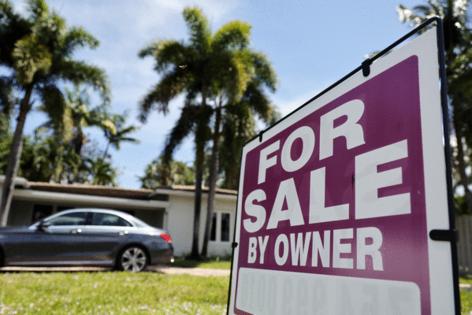US existing-home sales decline, marking worst April since 2009
Published in Business News
U.S. sales of previously owned homes unexpectedly dropped in April to the slowest pace in seven months, restrained by ongoing affordability constraints and highlighting a lackluster start to the key spring selling season.
Contract closings decreased 0.5% to an annualized rate of 4 million, according to National Association of Realtors data released Thursday. That fell short of the median estimate in a Bloomberg survey of economists and marked the weakest April since 2009.
“Pent-up housing demand continues to grow, though not realized,” NAR Chief Economist Lawrence Yun said in a statement. “Any meaningful decline in mortgage rates will help release this demand.”
Odds of a sustained pickup in the resale market are limited as mortgage rates march higher and prices stay elevated, despite more listings coming on the market. What’s more, consumer sentiment is near the lowest level on record, and the share who say now is a good time to buy a home is also close to an all-time low, according to the University of Michigan.
Mortgage rates rebounded last week to a three-month high of 6.92%, and are continuing to move up even more as Treasury yields climb. The two tend to move in tandem, and Treasuries have sold off recently over concerns about the U.S.’s swelling debt and deficits.
One disappointing aspect of the report was that a welcome increase in home listings failed to spark homebuying — which Yun said on a call with reporters will result in a “slight downgrade” to his yearly sales forecast. The inventory of existing homes for sale increased nearly 21% from a year ago to 1.45 million, the most for any April since 2020, NAR data show.
Greater supply is also failing to bring prices down. The median sales price climbed 1.8% from a year ago to $414,000, a record for the month of April and reflecting greater activity at the upper end. However, Yun noted the size of the increase was the smallest since mid-2023, pointing to slowing price appreciation.
Existing-home sales account for the majority of the U.S. total and are calculated when a contract closes. The government will release April new-home sales on Friday.
Economists had expected home sales to increase last month — likely because a gauge of contract signings rose notably in March, and homes tend to go under contract a month or two before they’re sold. However, Yun said the cancellations rate increased to 7%, the highest since January 2024, potentially explaining why the stronger pending sales figures didn’t lead to higher April closings.
Other data Thursday pointed to a stable labor market and improved business activity after a slump in April. Initial jobless claims were little changed last week, the period when the government surveys for the May employment report. The S&P Global flash May composite index of business output rose as anxiety on tariffs eased.
(With assistance from Chris Middleton.)
©2025 Bloomberg L.P. Visit bloomberg.com. Distributed by Tribune Content Agency, LLC.












Comments